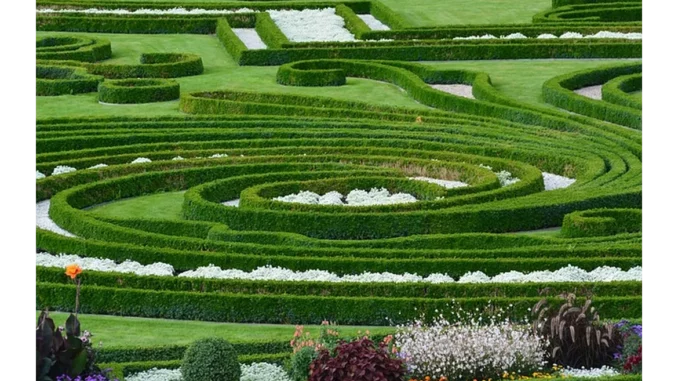
By Marcia Thompson
When it comes to designing a modern garden, the initial step is both crucial and exhilarating: planning the layout. This involves assessing the available space, understanding the garden’s purpose, and determining how to bring your vision to life. Recently, I had the pleasure of speaking with Emily Hartman, a seasoned landscape designer whose insights into modern garden layouts are as refreshing as they are informative.
Emily, who has worked on numerous projects ranging from small urban gardens to expansive suburban backyards, graciously shared her approach to planning a modern garden layout. Her expertise provided a comprehensive guide that will undoubtedly inspire anyone looking to create a contemporary outdoor sanctuary.
The Starting Point: Assessing the Space
Emily began by stressing the importance of thoroughly assessing the available space. “Every garden is unique, and so is the approach to designing it,” she explained. “You need to consider the dimensions, the existing structures, and natural features. It’s about understanding what you have to work with before you start dreaming up possibilities.”
She detailed how she typically starts by sketching a rough layout, noting the sun’s path, which is crucial for plant placement, and identifying any existing elements that could either be integrated into the new design or need to be removed. “Knowing which areas receive full sun and which are shaded helps in selecting the right plants and deciding where to place seating areas or water features.”
Understanding the Garden’s Purpose
Next, Emily emphasised the importance of clearly defining the garden’s purpose. “Are you looking for a serene retreat, a space for entertaining, or perhaps a functional area for children to play? Your garden’s purpose will guide every aspect of the design.”
For instance, a garden meant for relaxation might include quiet nooks with comfortable seating, surrounded by lush, low-maintenance plants like the Areca Palm for shading and privacy. On the other hand, an entertainment-focused garden might feature a sleek patio with ample seating and a barbecue area, complemented by striking plants like the Agapanthus Lily of the Nile.
Geometric Precision: Designing with Shapes
A hallmark of modern garden design is the use of geometric shapes. “Clean lines and defined shapes bring a sense of order and sophistication,” Emily noted. “Even in a small garden, geometric pathways or circular plant beds can make a significant impact.”
She shared how she often incorporates materials like concrete or large pavers for the pathways, arranged in straight lines or geometric patterns. “It’s not just about aesthetics; these pathways guide visitors through the garden, creating a seamless flow from one area to another.”
Integrating Natural and Man-Made Materials
One of the most intriguing aspects of modern garden design is the blend of natural and man-made materials. “Combining elements like wood, stone, and greenery with concrete, metal, and glass adds depth and interest,” Emily explained. “It creates a dynamic contrast that makes the garden visually engaging.”
She described a recent project where a concrete patio was softened with the addition of wooden furniture and lush potted plants. “The contrast between the hard concrete and the natural wood created a balanced and inviting atmosphere. Similarly, a metal sculpture stood out beautifully against a backdrop of natural stone and greenery.”
Choosing a Focal Point
A well-designed modern garden often features a focal point that draws the eye. “This could be anything from a striking piece of sculpture to a beautiful tree or a minimalist water feature,” Emily said. “The key is to choose something that complements the overall design and can be appreciated from various angles.”
She recommended positioning the focal point strategically, whether at the end of a pathway, in the centre of the garden, or against a neutral backdrop. “It should stand out yet feel like an integral part of the garden’s design.”
Selecting Modern Plants
Plant selection is pivotal in a modern garden. “Opt for plants with strong architectural forms and bold foliage,” Emily advised. “Succulents, ornamental grasses, and plants like the Aloe and Anthurium Jungle are excellent choices.”
She also highlighted the importance of choosing low-maintenance plants, especially for those who prefer a clean, uncluttered look with minimal effort. “Drought-resistant plants like lavender, yucca, and agave are perfect for modern gardens. They require little water and upkeep, making them ideal for busy homeowners.”
Incorporating Hardscaping Elements
Hardscaping elements like pathways, outdoor structures, and water features play a significant role in modern garden design. “Pathways made from materials like concrete or gravel, and outdoor structures like pergolas or garden walls, can define different zones within the garden,” Emily explained.
She also stressed the importance of water features. “A simple reflecting pool or a sleek water wall adds a sense of tranquility and movement. It’s about creating an ambiance that enhances the garden’s overall design.”
Conclusion: Bringing It All Together
Emily’s insights provide a clear roadmap for anyone looking to design a modern garden with contemporary flair. From assessing the space and understanding the garden’s purpose to integrating materials and selecting the right plants, each step is vital in creating a garden that is both functional and visually stunning.
“Ultimately, your garden should be a reflection of your personal style and needs,” Emily concluded. “Experiment with different ideas and don’t be afraid to make the garden your own. After all, it’s an extension of your home—a place to relax, entertain, and connect with nature.”
Marcia Thompson


Be the first to comment